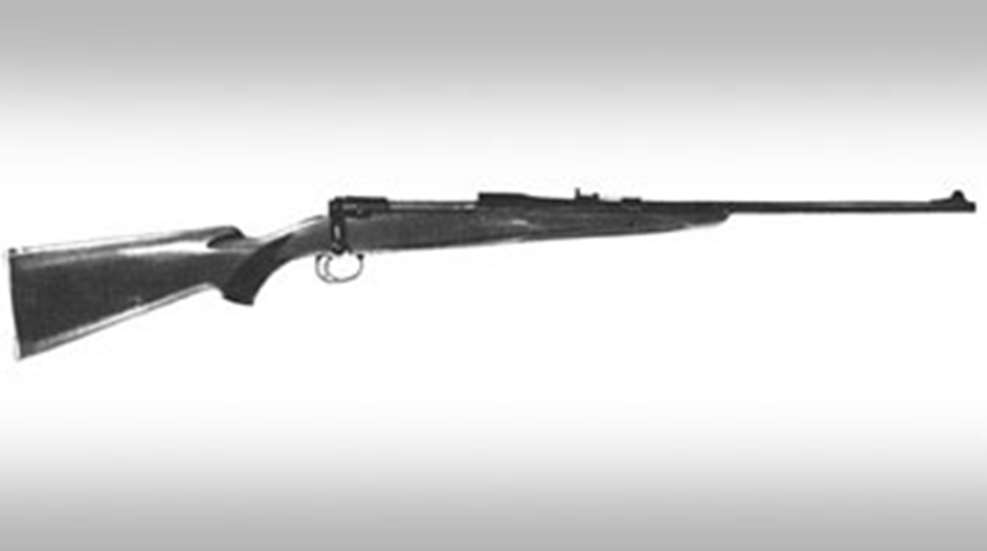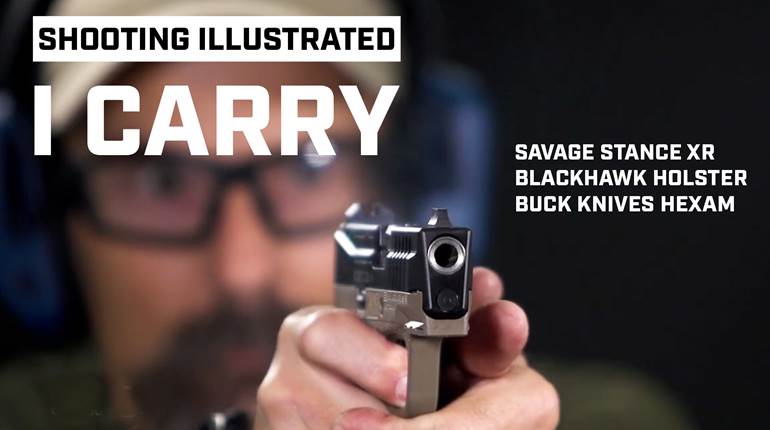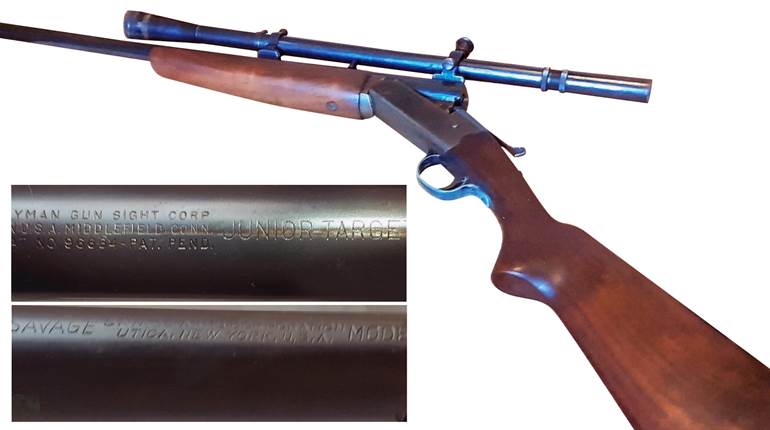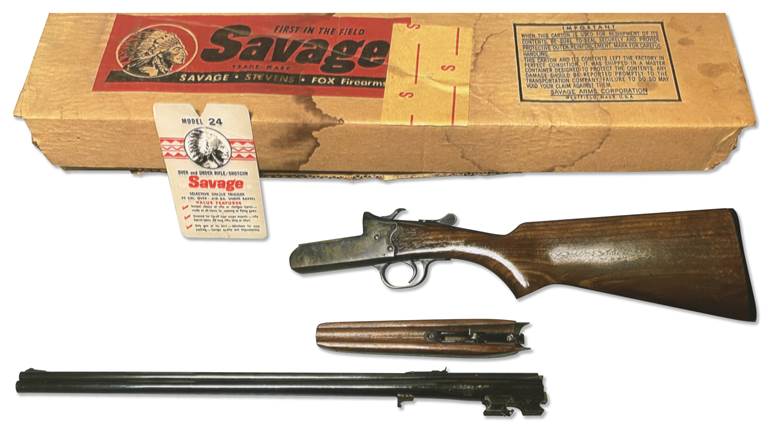
A new bolt-action high-power sporting rifle noteworthy for its many interesting design features, is now coming off the assembly line of Savage Arms Corporation, Chicopee Falls, Mass. It is the Model 110, offered in .30-’06 Sprg. and .270 Win. calibers and priced at $109.75. The late Nicolas Brewer, designer of this rifle, achieved a reputation in the gun-designing field with several popular Savage and Stevens arms. Among these were the Savage Models 6, 15, and 340, and the Stevens Model 87. That he was an original thinker and well grounded in basic firearms design is quite evident when one studies the mechanical make-up of this new rifle. It might also be noted that Brewer was production-wise in that economy of materials and simplicity of manufacture were to him governing considerations.
Has good handling qualities
The Model 110 is a true featherweight rifle with clean, symmetrical lines and excellent proportions. Its handling qualities are good; the balance of the piece lies between the hands where it belongs. Although advertised weight of the rifle is 6¾ pounds, our sample rifles in .30-’06 Sprg. caliber weigh 6¼ and 6½ pounds respectively. Weight of individual rifles varies slightly according to density of the wood, and the .270 caliber Model 110 will weigh a trifle more due to thicker barrel walls. Stock is of American black walnut with checkered pistol grip and forearm. Length of pull is 13½ inches, with comb drop 1¼ inches and heel drop 2 inches. Overall rifle length is 43 inches. The 22-inch barrel is of chrome molybdenum steel, rifled with six grooves, right-hand twist, one turn in 10 inches. Rifling specifications are identical for both calibers. Barrels for the Model 110 are currently rifled by the hook cutter method and are proof-tested. The assembled rifle is given an additional proof test. The action is of basic Mauser design with a staggered-column, four-cartridge box magazine. With a round in the chamber, the capacity of the rifle is five. The action cocks on the opening stroke of the bolt and primary extraction is furnished by camming action between opposed surfaces of the bolt handle and rear baffle. Bolt operation is extremely smooth and neither of our rifles revealed a tendency to ‘cramp’ when operated rapidly from the shoulder. The bolt assembly is a sealed unit capped at the rear end with a heavy screw. Additional protection is provided by front and rear baffles, as well as the gas escape ports in bolt head and receiver ring.
Sear is multipurpose type
The sear arrangement is of particular interest. A single metal part incorporates both primary and secondary sears, and in addition functions as a bolt stop and cocking indicator. The upper, or primary, sear acts in conjunction with the cocking pin which protrudes from the side of the bolt body. The lower, or secondary sear, acts in conjunction with the trigger beam. The bolt stop function is accomplished by the front face of the primary sear, which bears against the right lug of the front baffle when bolt is drawn to the rear. To remove the bolt from the rifle, it is necessary to depress both trigger and cocking indicator button. To replace the bolt, first pull the trigger to release the primary sear and then insert the bolt in the receiver. The secondary sear surfaces are not damaged by vigorous operation of the bolt since the sear and trigger are not engaged until the bolt is fully closed. This is not true of some rifles in which the sear also functions as the bolt stop. Trigger pulls of several rifles tested were crisp and creep-free. Model 110 receivers are of chrome molybdenum steel and are drilled and tapped for standard top scope mounts and metallic receiver sights. Factory sights are a bead front and a U-notch step-elevator open rear sight. The leaf of the rear sight folds down to clear large objective scope sights. The notches on the elevator plate are smaller and greater in number than usual to provide finer elevation adjustments. Windage adjustment is obtained by tapping front sight blade to left or right in its slot. Sight radius is 17¼ inches. The receiver is attached to the stock by means of two sturdy screws, which also secure the dural floorplate. The dural trigger guard is held in place by the rear receiver screw and an additional wood screw. The barrel is not attached to the stock. The alloy buttplate is deeply corrugated and is of shotgun pattern. Pistol grip is capped with black plastic.
Performed well in tests
When fired with 110-, 150-, and 180-gr. ammunition the Model 110 rifle exhibited good accuracy, with no functioning difficulties. The spring-type ejector proved to be efficient and threw empty cases to the right at a proper ejection angle to clear low-mounted scopes. Quality of finish on both wood and metal parts is excellent. We can make no significant criticism of this well-designed and well-made arm.





































